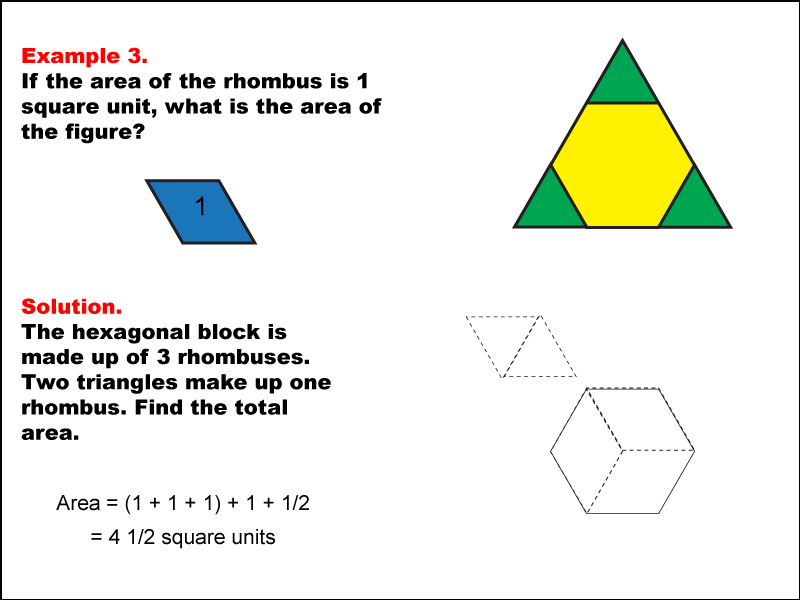
Display Title
Math Examples: Area with Pattern Blocks: Example 3
Display Title
Math Examples: Area with Pattern Blocks: Example 3

Topic
Geometry
Description
This example illustrates area calculation using a hexagonal figure made up of three rhombuses and two triangles. Each rhombus has an area of 1 square unit, while each triangle contributes half a rhombus to the overall shape. The total area is calculated by summing the areas of the rhombuses and triangles, resulting in 4.5 square units.
Pattern blocks are invaluable tools for teaching geometry concepts, as they allow students to visualize and manipulate shapes in a tangible way. This collection of examples showcases various combinations of pattern blocks, helping students understand how different shapes can be combined to form larger figures and how their areas relate to one another.
Providing multiple worked examples is crucial for students to fully grasp geometric concepts. Each example in this series presents a unique configuration of shapes, challenging students to apply their knowledge in different contexts and recognize patterns in area calculations across various geometric arrangements.
Teacher Script: "Let's examine this hexagon made of rhombuses and triangles. Each rhombus has an area of 1 square unit, and the triangles are each half of a rhombus. Can you count how many rhombuses and triangles are in this figure? How do you think we can calculate the total area? Remember to consider both the whole rhombuses and the fractional parts contributed by the triangles."
For a complete collection of math examples related to Geometry click on this link: Math Examples: Area with Pattern Blocks Collection.
| Common Core Standards | CCSS.MATH.CONTENT.6.G.A.1 |
|---|---|
| Grade Range | 6 - 7 |
| Curriculum Nodes |
Geometry • Polygons • Applications of Polygons |
| Copyright Year | 2024 |
| Keywords | area with tiles |